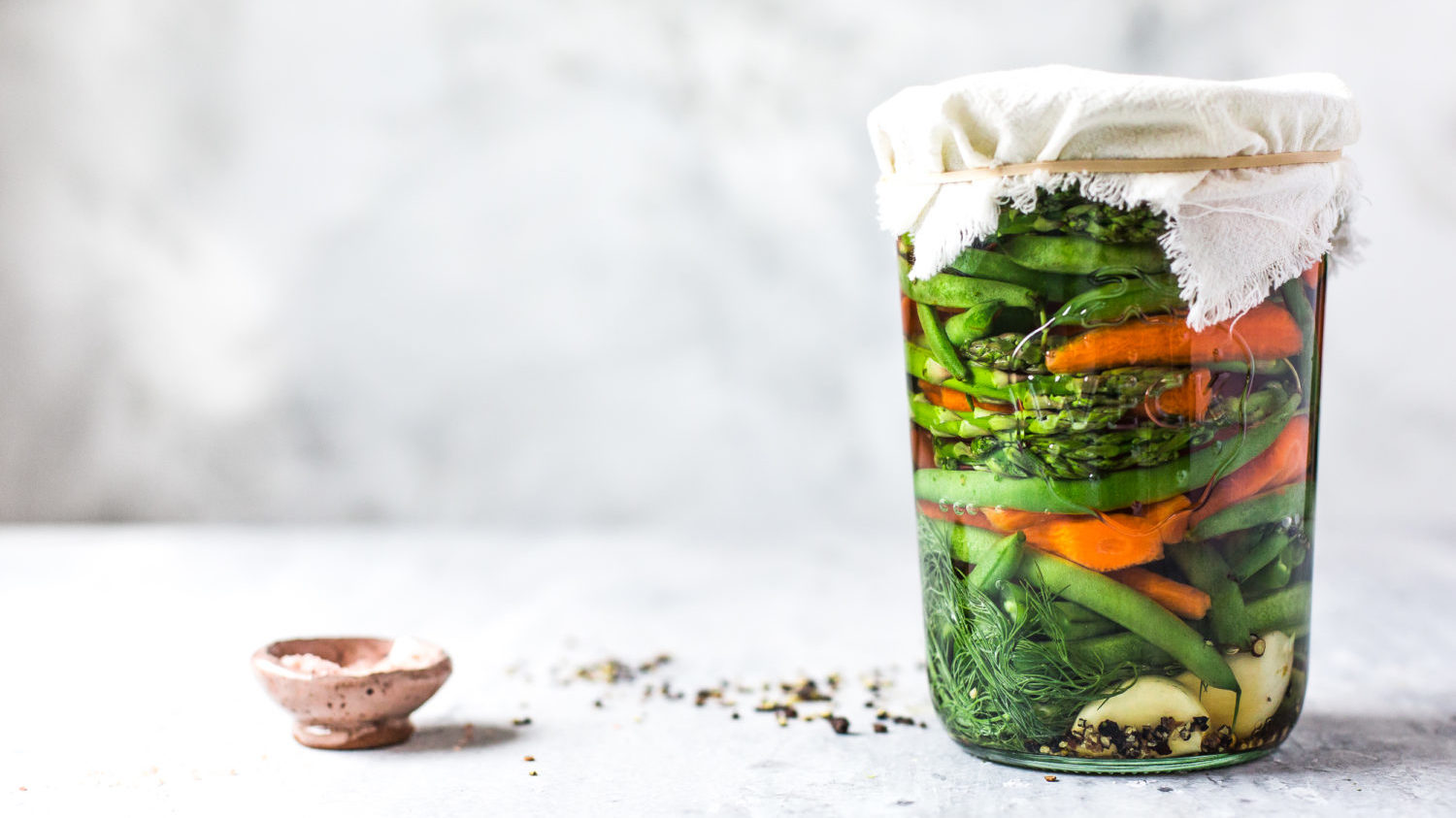
Make summer vegetables last all year long by fermenting them! Fermented foods go through a process of lacto-fermentation, meaning natural bacteria convert the sugars and starches in food to create lactic acid. There are many wonderful benefits of eating fermented foods, especially the nutritional ones provided by probiotics that develop during the fermentation process.
For safe countertop fermentation, we recommend a quart-size or half-gallon-size, wide-mouth Mason jar; glass or ceramic fermentation weights; and airlock fermentation lids. The weights will keep your vegetables submerged under the brine, protecting your fermentation environment from harmful bacteria. Airlock fermentation lids will allow carbon to escape during the fermentation process while ensuring no oxygen can enter. We recommend Pink Himalayan sea salt for home fermenting since it has a high mineral profile. Redmond Real Salt is also a great choice.
Check out local homesteading store Egg|Plant Urban Farm Supply at 1771 Selby Ave. for all your fermenting supply needs!
Fermented Vegetables
INGREDIENTS
- 4 cups green beans, carrot sticks and asparagus, chopped (Substitute with your favorite vegetables like broccoli, cauliflower, radishes, beets or pickling cucumbers.)
- 3 garlic cloves, peeled
- ½ tsp. dried dill
- ½ tsp. black pepper, freshly-ground
- 2 Tbsp. Pink Himalayan sea salt
- 4 cups filtered water
INSTRUCTIONS
- Combine water and sea salt in a large bowl; stir to dissolve.
- Place garlic, dill, and black pepper in the bottom of a clean, wide-mouth quart jar. Add cut vegetables to jar, pressing down as you layer. Add salt-water brine to jar and leave 1 inch of headspace at the top.
- Use a weight to keep cut vegetables under the brine; attach an airlock lid.
- Ferment at room temperature (approximately 65–70 degrees) for 4–5 days. You will begin to see tiny bubbles forming. Once the vegetables reach your desired texture and flavor, remove the weight and place your ferments in the refrigerator with a regular quart jar lid.
- Enjoy these tasty, probiotic-rich vegetables anytime you’d like!

